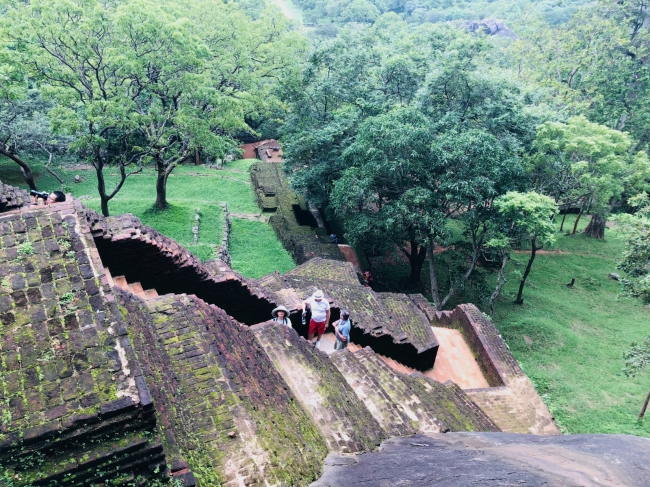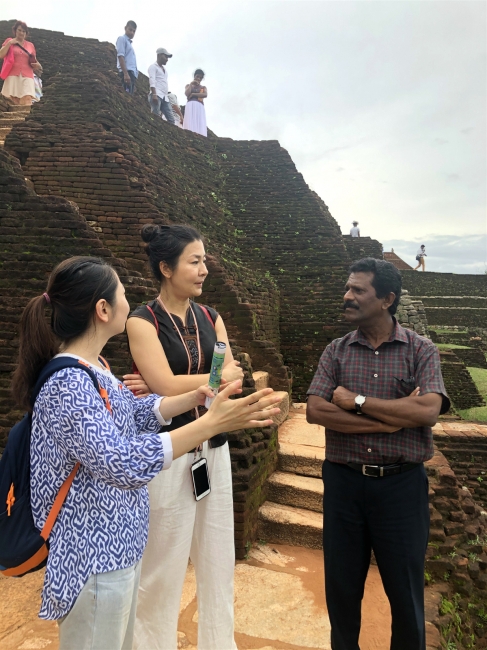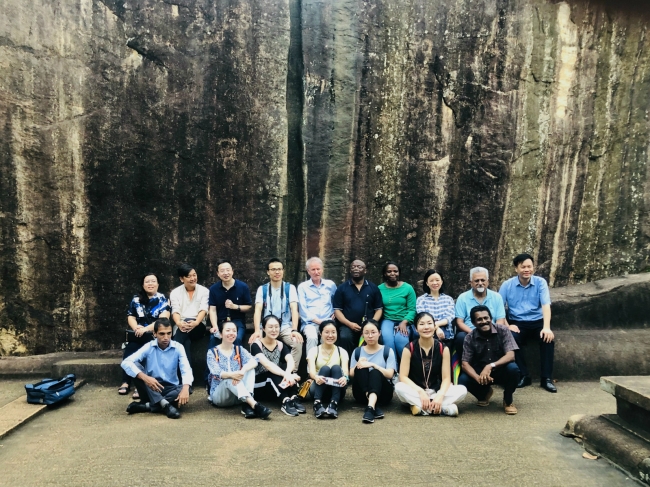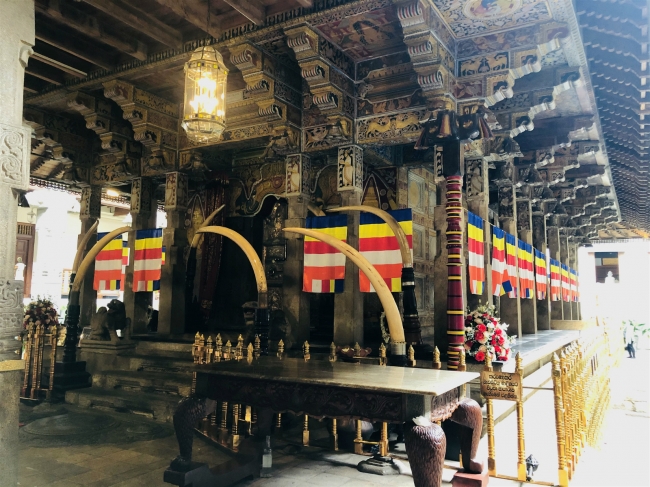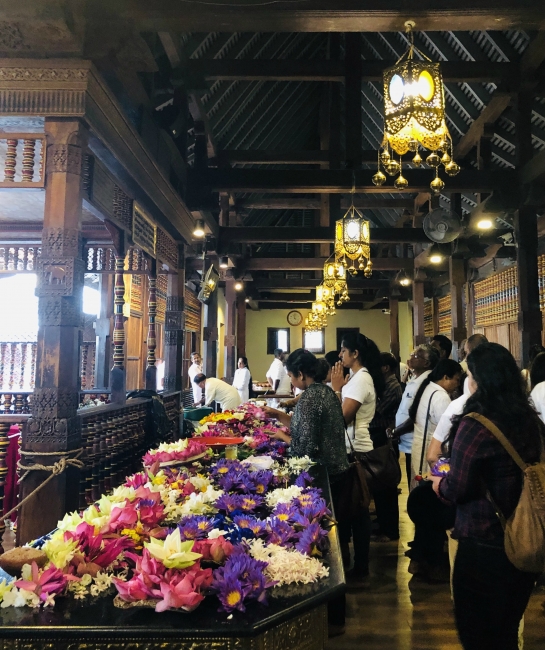| Field Trip in Sri Lanka |
| Author:YANG Zilin, WHITRAP Shanghai PublishDate:2019-12-26 Hits:3252 |
On December 9-10, the programme organizes field trips to a number of World Heritage sites in Sri Lanka. On the first day, participants visited Sigiriya World Heritage Site. It is one of Sri Lanka’s ancient political capitals and most sensational archaeological heritage site that has sufficient evidence to prove that the history of Sigiriya can date back to pre-historic times. There were originally cave shelters for monks from B.C.300, but it is mostly known for the constructional activities of King Kasyapa (A.D. 477-495). As the younger son of the former king, Kasyapa chose to make Sigiriya his seat of administration to avoid his brother’s revenge, modeling the city on the mythical Alakamanda of the god Kuvera. Not long after his short reign, the site was converted to a Buddhist monastery and was finally abandoned after the thirteenth century. Since the 1980s, archeological activities have been revived by the Central Cultural Fund.
Ancient City of Sigiriya
Ancient City of Sigiriya Led by Gamini, Nilan Coray and the site manager, participants entered the site from the Western Entrance, passing by the Water and the Boulder Gardens, appreciating ancient fountains that are still working and cave arts. Climbing up the rock, people could view the significant secular paintings of the Sigiriya ladies as well as graffiti of inscriptions from the ancient times. Local experts explained the conservation techniques and ICOMO’s role in conservation on the way. Climbing along the Lion’s Paws, participants finally reached the Palace Complex. At the foot of the Lion Rock located the Sigiriya Museum. As an archaeological site museum managed by the Central Cultural Fund, this museum manifested the results of decades of archaeological research at Sigiriya World Heritage Site. The building itself is a smart modern expression of ancient building concepts including symmetry, geometry and flowing of the water. In the gallaries, visitors can tour through time from the geological past to the present and learn the histories of Sri Lanka’s Kingdom from texts, paintings, videos and molds. The site particularly organized a local martial art performance for the team. Consisting 6 main parts, the art embodies meanings of beautifying our world, mind and soul. It is still practiced in the same region and culture for the same purpose.
Ancient City of Sigiriya
Ancient City of Sigiriya
Group photo at Sigiriya On December 10, participants explored the Ancient City of Kandy. In ancient times, Sri Lanka has changed its capital for around seven times, and Kandy was the last capital of Sri Lanka before the country became a British colony in 1815. It is said that since the fifth century, Kandy situated a Buddha, and therefore rulers of every period moved the Buddha in order to find the best place to worship him. Accordingly, during each period there was a new building, and now the site has become a palace complex looked after by two monks and a guardian. The oldest shrine can date back to the sixth century. It is lucky that even during the era of colonization, the religion was respected and the British built a judge court on the site in the local architectural style. However, the site was bombed by a terrorist group in 1998 and the restoration work was planned by Gamini. Gamini introduced his experience which is his turning point of conservation concepts that no longer heavily rely on Eurocentric discourse. Instead of the top-down approach and following the principle of ‘restoring the old as the old’, the action was dominated by Buddhist monks and the planning was made upon values of people. It is an exemplar of conservation on living heritage and has now become one of the most popular destinations for tourism and pilgrimage in Sri Lanka. The current guardian met the team at the judge court and explained the architectural style of this building, after which the team visited the relocated entrance of the site which was formerly at the center of the bomb attack. Rather than restoring the ruins, the remnants have been kept as a memorial for the bomb and showcased the sacred past of this religious site.
Sacred City of Kandy
Sacred City of Kandy
Sacred City of Kandy |
- Call for Application | 2024 Global Awards for World Heritage Education Innovative Cases(AWHEIC) Promoting what people do and how they do it
- Documentary: 2023 World Heritage Creative X Innovators Conference and the AWHEIC Third Anniversary Celebration
- Publication | WHITRAP Newsletter No. 61
- Mt. Huangshan first show in Climate Action for World Heritage
- Call for Good Practices: 2024 Environment and Resilience
- FAQs | 2024 Call for Good Practices
Copyright © 2009-2012 World Heritage Institute of Training and Research-Asia and Pacific (shanghai)



